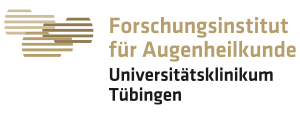Ueffing Lab
Molecular Biology of Retinal Degenerations
Home » Labs » Ueffing Lab » DYNAMO
Molecular dynamics of membrane associated protein complexes
DYNAMO
Subproject
Dynamic of rhodopsin-associated protein interactions in photoreceptor outer segments
Facts & Figures
- Project Duration: 2009 – 2013
- Funding Agency: BMBF
Abstract
Dynamics of multifunctional protein complexes are originated by signal-dependent adaptations that are materialized as structural alterations, post-translational modifications, proteolytic cleavages, protein translocation and inter-exchange in binding partners. Dynamic changes in a given protein complex are connected to protein regulatory networks and result in systemic and integrated quantitative signal outputs.
The main aim of the DYNAMO consortium, coordinated by us, is a systems biology approach to analyze the dynamics of membrane-associated protein complexes. For this purpose the consortium is further developing methodology to determine the state and composition of protein complexes and novel mathematical modeling techniques for the in silico description and prediction of the protein networks.
With two different model systems the consortium is covering different dynamic aspects:
- The transport of signals across membranes: signaling by the G protein-coupled receptor rhodopsin – transducing light to protein networks
- The transport of proteins across membranes: protein translocation through mitochondrial protein import
Our task within the consortium is the qualitative and quantitative description as well as the modeling of light-dependent alterations in retinal rhodopsin-associated protein complexes. This includes the determination and quantification of the composition and dynamics of functional sub-complexes. Experimental proteomic data are used to build up in silico network models. Vice versa the computational modeling can predict missing functional links for experimental validation.
Project Collaborators
- Chris Meisinger, Nikolaus Pfanner, Institute for Biochemistry and Molecular Biology, ZBMZ, Albert-Ludwigs-University of Freiburg, Freiburg
- Albert Sickmann, Leibnitz-Institute for Analytical Sciences – ISAS e.V., Dortmund
- Friedrich Lottspeich, Max Planck Institute of Biochemistry, Martinsried
- Oliver Sawodny, Michael Ederer, Institute for System Dynamics, (ISYS), University of Stuttgart, Stuttgart
Scientists in Ueffing Lab
- Andreas Vogt
- Norbert Kinkl
- Johannes Dietter
Related Publications
- Kiel C, Vogt A, Campagna A, Chatr-aryamontri A, Swiatek-de Lange M, Beer M, Bolz S, Mack AF, Kinkl N, Cesareni G, Serrano L, Ueffing M Structural and functional protein network analyses predict novel signaling functions for rhodopsin. Molecular Systems Biology. 2011 Nov 22;7:551
- Boldt K, Mans D, Won J, van Reeuwijk J, Vogt A, Kinkl N, Letteboer S, Hicks W, Hurd R, Naggert J, Texier Y, den Hollander A, Koenekoop R, Bennett J, Cremers F, Gloeckner CJ, Nishina P, Roepman R, Ueffing M. Disruption of intraflagellar protein transport tin photoreceptor cilia causes Leber congenital amaurosis in humans and mice. J Clin Invest. 2011 Jun;121(6):2169-80
- Meixner A, Boldt K, Van Troys M, Askenazi M, Gloeckner CJ, Bauer M, Marto JA, Ampe C, Kinkl N, Ueffing M. A QUICK screen for Lrrk2 interaction partners – leucine-rich repeat kinase 2 is involved in actin cytoskeleton dynamics. (2011) Mol Cell Prot 10(1):M110.001172.
- Griciuc A, Aron L, Ueffing M. ER stress in retinal degeneration: a target for rational therapy? Trends Mol Med. 2011 Aug;17(8):442-51
- Van Campenhout CA, Eitelhuber A, Gloeckner CJ, Giallonardo P, Gegg M, Oller H, Grant SG, Krappmann D, Ueffing M, Lickert H. Dlg3 trafficking and apical tight junction formation is regulated by nedd4 and nedd4-2 e3 ubiquitin ligases. Dev Cell. 2011 Sep 13;21(3):479-91.

